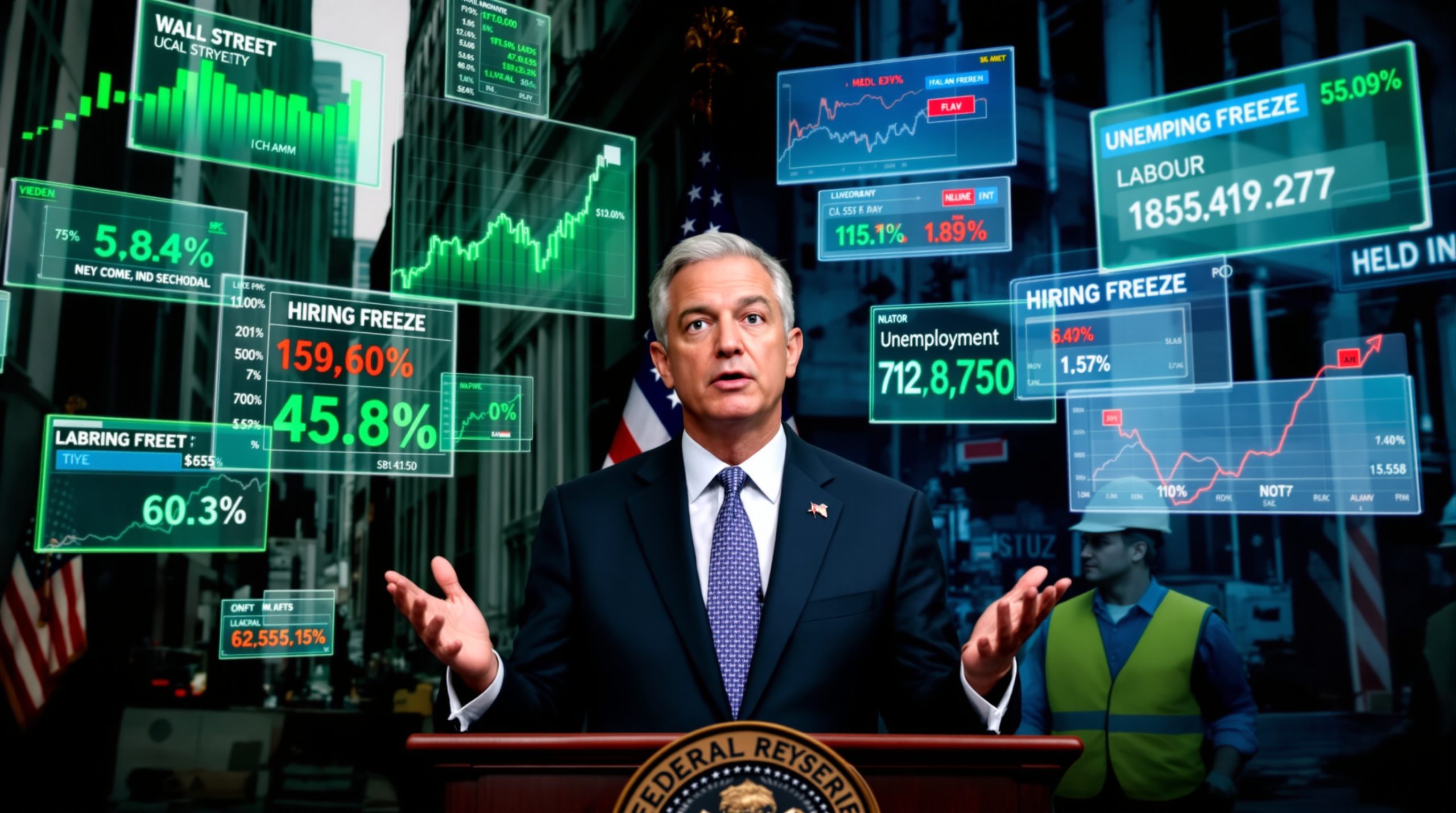How Are US Tariff Policies Creating Market Uncertainty?
The global markets are currently navigating a period of significant uncertainty over US tariffs and copper prices as critical trade policy deadlines approach. This volatility is particularly evident in the copper market, where price movements reflect growing concerns about future tariff implementations.
The Approaching Tariff Deadline
July 9, 2025, marks a pivotal moment for international trade as the US tariff suspension period nears expiration. Adding to the urgency, US Treasury Secretary recently established August 1 as the final cutoff date for trading partners to secure agreements.
According to recent communications from the Treasury Department, "Major agreements are nearing completion," though significant hurdles remain for many nations. The Trump administration has clearly signaled its intention to reimpose reciprocal tariffs impact on investments ranging from 10% to 70% on dozens of countries that fail to reach satisfactory trade arrangements by the deadline.
Market participants are preparing for a potential announcement of 12-15 tariff-related letters expected this week, which could provide some clarity on which nations may face penalties. These developments have injected considerable volatility into commodity markets, with copper traders particularly attentive to policy signals.
Key Countries in Trade Negotiations
India stands out among nations approaching a mini trade deal, though negotiations remain complicated by what Indian officials describe as "red lines on agriculture and dairy sectors." This stance highlights the challenges in reaching comprehensive agreements before the deadline.
Multiple other nations face the prospect of renewed tariffs if agreements aren't finalized by August 1. The varying stages of progress in negotiations have created an uneven global trade landscape, with some countries significantly closer to deals than others.
For those unable to reach agreements, the consequences are clear—reversion to April 2025 tariff levels starting August 1. This tiered approach to tariff implementation has created a complex matrix of potential outcomes that traders must navigate.
The uncertainty surrounding which countries will secure agreements and which will face renewed Trump tariff proposals has become a significant factor in price volatility across commodity markets, particularly for globally traded metals like copper.
What's Happening with Global Copper Prices?
The copper market has experienced notable price fluctuations in recent days, with movements closely tied to both physical market dynamics and broader geopolitical uncertainties.
Recent Price Movements
On July 4, LME copper opened at $9,872 per metric ton, reaching an intraday high of $9,896/mt before experiencing significant downward pressure. Prices eventually settled at $9,852/mt, marking a 1% decrease with trading volume of approximately 12,000 lots.
Similarly, the SHFE copper contract initially surged to 79,950 yuan/mt before consolidating downward. The contract bottomed at 79,720 yuan/mt, closing 0.56% lower with 17,000 lots traded—reflecting cautious sentiment across Chinese markets.
These price movements demonstrate the market's sensitivity to both physical supply conditions and the looming threat of tariff changes. The combined impact has created noticeable resistance to sustained price increases despite underlying supportive fundamentals.
Supply-Demand Factors Influencing Prices
Market analysis from Shanghai Metals Market (SMM) indicates a tight supply of mainstream standard-quality and high-quality copper observed last week. This constraint has provided some underlying support for prices despite other bearish factors.
Recent arrivals of Russian copper cargoes have slightly eased spot market conditions, though not enough to fully alleviate supply tightness. This influx represents one of several shifting variables influencing the delicate supply-demand balance.
Downstream enterprises continue to maintain bearish sentiment, affecting premium levels and limiting upside potential. Industry analysts note that "the combined effect of tariff uncertainties and changing supply dynamics has created resistance to price increases" despite relatively low global inventory positions.
The copper market thus finds itself at a crossroads, with physical fundamentals suggesting support while macroeconomic and copper price predictions impose downward pressure—creating a challenging environment for price forecasting.
How Are Regional Copper Markets Performing?
Regional copper markets show varying degrees of resilience in the face of global uncertainties, with notable differences between key Chinese trading hubs.
Shanghai Market Conditions
In Shanghai, SMM #1 copper cathode spot premiums averaged 115 yuan/mt against the SHFE copper 2507 contract on July 4. The premium range of 70-160 yuan/mt remained unchanged month-over-month, suggesting relative stability in this key trading hub.
Industry analysts project that spot premiums will likely stabilize after recent declines as copper prices face correction pressure. This stabilization reflects Shanghai's position as China's primary copper trading center, where liquidity tends to remain stronger even during uncertain periods.
Trading activity in Shanghai has shown signs of stabilization despite broader market uncertainties, with consistent volumes reported across major exchanges. This relative resilience highlights Shanghai's central role in China's copper market infrastructure.
Guangdong Market Dynamics
The situation differs notably in Guangdong, where spot premiums ranged from a discount of 10 yuan/mt to a premium of 60 yuan/mt on July 4. The average premium of 25 yuan/mt represented a significant 40 yuan/mt decline month-over-month.
Market participants report persistent bearish sentiment among downstream enterprises in the region, driving continuous premium declines. This regional weakness stands in contrast to Shanghai's relative stability, highlighting the uneven impact of market uncertainties across different Chinese industrial centers.
Regional differences are emerging in market responses to global uncertainties, with Guangdong seemingly more vulnerable to demand fluctuations. The province's greater exposure to export markets may partially explain this enhanced sensitivity to international trade concerns.
Imported Copper Situation
In the imported copper segment, warrant prices maintained at $20-40/mt (QP July), unchanged month-over-month. B/L prices reached $34-70/mt (QP July), representing a modest $3/mt increase on average.
EQ copper premiums ranged from -$11/mt to $7/mt, averaging $1/mt higher month-over-month despite broader market concerns. These modest movements suggest that import markets are maintaining a degree of stability despite the uncertain policy environment.
Market activity in the import segment remained sluggish with limited participation from downstream buyers. Traders report that "overseas suppliers would not adjust coefficients unless shipment volumes increased significantly," indicating a standoff between buyers and sellers in the current uncertain climate.
What's Happening in the Secondary Copper Market?
The secondary copper market has experienced its own distinct dynamics, reflecting both domestic and international pressures.
Price Movements in Secondary Copper
Secondary copper raw material prices decreased by 200 yuan/mt month-over-month, indicating growing pressure in this segment. In Guangdong, bare bright copper was priced at 74,000-74,200 yuan/mt on July 4, down 200 yuan/mt from the previous trading day.
The price difference between copper cathode and copper scrap narrowed by 277 yuan/mt to 1,705 yuan/mt, reflecting shifting dynamics between primary and secondary markets. This compression suggests changing economic incentives for processors and consumers of different copper grades.
The gap between copper cathode rod and secondary copper rod stood at 1,320 yuan/mt, a key metric watched by fabricators when making procurement decisions. These price relationships influence material substitution decisions throughout the value chain.
The narrowing spread between primary and secondary copper products indicates evolving market conditions that may affect recycling economics and material choices for manufacturers. Industry participants closely monitor these relationships as indicators of broader market trends.
Import Market Dynamics
While overseas copper prices pulled back, import traders reported unchanged overseas quotation coefficients. This divergence highlights the complexity of international supply chains in the secondary copper market.
Suppliers have indicated an unwillingness to adjust coefficients without significant increases in shipment volumes, creating friction in trade flows. This stance reflects the cautious approach of international suppliers in the current uncertain policy environment.
International supply chain dynamics are creating additional complexity in secondary copper markets, with logistics and financing considerations adding layers of complication. These factors further contribute to the challenges facing market participants.
The price relationships between primary and secondary copper continue to evolve, influenced by both domestic consumption patterns and international trade flows. These shifting dynamics create both challenges and opportunities for different market segments.
How Are Inventory Levels Affecting the Market?
Inventory positions play a crucial role in copper price formation, with recent movements sending mixed signals to market participants.
Current Inventory Positions
LME copper cathode inventories increased by 950 metric tons to 95,275 mt on July 4, representing a modest build in global exchange stocks. This increase, while not dramatic, contributed to the cautious sentiment in international markets.
In contrast, SHFE warrant inventories decreased by 1,796 mt to 22,307 mt on July 7, indicating a drawdown in Chinese exchange stocks. These opposing movements in global and Chinese inventories create mixed signals for traders attempting to gauge market direction.
The divergent inventory trends between international and Chinese exchanges reflect regional differences in supply-demand balances. This dichotomy complicates the task of interpreting inventory data as a predictor of price movements.
These inventory changes have significant implications for market positioning, with traders closely watching warehouse stocks for indications of underlying physical market conditions.
Inventory Impact on Pricing
Relatively low global inventory levels continue to provide underlying support for copper prices despite other bearish factors. Historical context suggests current global stocks remain below average levels, contributing to market tightness.
Inventory movements are being closely monitored as indicators of market direction, with unexpected builds or draws capable of triggering significant price responses. The sensitivity to inventory changes has heightened amid broader market uncertainties.
Changes in warehouse stocks influence premium/discount structures in regional markets, affecting physical market transactions. These structures provide important signals about localized supply-demand conditions.
Traders are adjusting positions based on evolving inventory situations, with some viewing current levels as indicative of underlying support while others focus on the rate of change as a more predictive metric.
What Strategic Developments Are Occurring in China's Metals Sector?
China continues to implement strategic initiatives in its metals sector, with significant implications for global copper markets.
Government Initiatives
SASAC Director Yuzhuo Zhang recently visited China Nonferrous Metal Mining Group to emphasize strategic priorities for the sector. This high-level attention highlights the critical importance of metals in China's industrial policy.
The visit focused on enhancing critical metal and mineral resource security through integrated development strategies. This approach signals China's commitment to strengthening its position in global metals markets through coordinated policy measures.
Officials are pushing for implementing new mineral exploration breakthrough strategies to expand domestic resource bases. These initiatives aim to reduce dependence on imports for critical metals, including copper.
Efforts to boost reserves and production of key metals reflect China's determination to strengthen supply chain resilience amid growing geopolitical tensions. These strategic priorities align with broader national security objectives related to resource availability.
Industry Integration Efforts
China is accelerating integrated development across exploration, investment, development, and processing in the metals sector. This vertical integration approach seeks to maximize value capture throughout the supply chain.
The strategic emphasis on projecting a positive image for central SOEs in global initiatives suggests continued international expansion by Chinese metals companies. This outward orientation will likely influence global copper supply dynamics in coming years.
A coordinated approach to nonferrous metals value chain development aims to maximize resource utilization and economic returns. This strategy encompasses both domestic and international components of China's metals industry.
Long-term planning to address potential supply disruptions from geopolitical tensions reflects growing awareness of supply chain vulnerabilities. Chinese policymakers are implementing preventative measures to ensure continued access to critical metals like copper.
What's the Outlook for Copper Markets?
The copper market outlook remains complex, with multiple factors influencing potential price trajectories.
Short-Term Market Expectations
Copper prices likely face continued resistance due to tariff uncertainties in the near term. The approaching deadlines for trade agreements create a challenging environment for sustained price increases despite supportive physical fundamentals.
Shanghai spot premiums are expected to stabilize after recent declines, providing some clarity for physical market participants. This stabilization would represent a welcome development amid broader market volatility.
Downstream demand remains cautious amid economic uncertainties, limiting upside potential for prices and premiums. Manufacturers continue to adopt a wait-and-see approach to procurement decisions given the unclear policy landscape.
Market participants are closely watching developments in US trade policy, with potential for significant price reactions to any concrete announcements. The resolution—or escalation—of US tariffs on iron ore could trigger notable market movements in either direction.
Factors to Monitor
Progress in trade negotiations ahead of the July 9 and August 1 deadlines represents the most immediate driver of market sentiment. Any indications of breakthrough agreements or escalating tensions will likely trigger price responses.
Changes in physical market tightness following recent cargo arrivals warrant close attention as indicators of underlying supply-demand balances. The rate at which new supplies are absorbed will provide important signals about consumption strength.
Shifts in downstream buying sentiment as policy clarity emerges could trigger changes in procurement patterns and inventory management. Any transition from cautious to more aggressive buying would support higher prices and premiums.
Inventory movements serve as important indicators of underlying supply-demand balance and deserve continued monitoring. Unexpected builds or draws could signal shifting market fundamentals ahead of price movements.
FAQs About Copper Market and Tariffs
How might US tariffs specifically impact copper prices?
New tariffs could increase costs throughout the supply chain, potentially reducing demand in manufacturing sectors that rely heavily on copper. Electronics, construction, and automotive industries would face higher input costs, potentially reducing consumption and putting downward pressure on prices.
Additionally, tariffs would likely disrupt established trade flows between major copper-producing and consuming nations. This disruption could create regional price disparities and alter traditional premium structures as market participants adjust to new economic realities.
The uncertainty surrounding tariff implementation often proves as impactful as the tariffs themselves, with market participants potentially delaying procurement decisions until policy clarity emerges. This hesitation can create artificial demand lulls followed by potential supply crunches.
What is the relationship between copper prices and global economic health?
Copper is often considered a bellwether for economic activity due to its widespread use in construction, electronics, and transportation. The metal's price movements frequently reflect market expectations about global economic growth trajectories.
During periods of economic expansion, copper demand typically increases as construction, manufacturing, and infrastructure development accelerate. Conversely, economic contractions usually correlate with reduced copper consumption and price weakness.
The metal's sensitivity to economic conditions has earned it the nickname "Dr. Copper" for its perceived ability to diagnose economic health. While not a perfect indicator, copper price trends often align with broader economic cycles, making it a closely watched commodity for investors seeking insights into global growth patterns.
How do inventory levels typically influence copper market sentiment?
Declining inventories generally signal tightening supply conditions and can support higher prices. When visible stocks on major exchanges fall, market participants often interpret this as evidence of robust demand or constrained supply, creating bullish sentiment.
Rising inventories often indicate weakening demand or oversupply, potentially putting downward pressure on prices. Substantial or unexpected inventory builds typically generate bearish market responses as they suggest consumption may not be keeping pace with production.
The rate of inventory change often proves more significant than absolute levels in influencing market psychology. Accelerating draws or builds can trigger stronger price responses than gradual changes, even if the latter result in more significant total movements over time.
What role does China play in global copper markets?
China remains the world's largest copper consumer, accounting for approximately half of global demand. This dominant position makes Chinese economic performance, policy shifts, and strategic initiatives crucial factors in global copper market dynamics.
The country's urbanization, infrastructure development, and manufacturing growth have driven copper demand for decades. Any significant changes in these trends—whether accelerations or slowdowns—have outsized impacts on global consumption patterns.
China's strategic emphasis on securing critical mineral resources reflects awareness of its market influence and supply vulnerabilities. Initiatives to enhance domestic production, increase recycling, and secure international supply chains all represent responses to this strategic concern.
Chinese inventory movements, premium levels, and import volumes serve as critical indicators for global market participants. These metrics provide insights into the world's largest consumer market and often influence price expectations across international exchanges.
Further Exploration
Readers interested in learning more about copper market dynamics and tariff impacts should consider monitoring official communications from trade ministries, customs data releases, and industry association reports. Shanghai Metals Market provides regular updates on Chinese copper markets, while the International Copper Study Group offers global supply-demand analysis.
Additionally, following developments in downstream industries such as construction, electronics, and automotive manufacturing provides valuable context for understanding copper demand trends. These sectors represent major consumption drivers and often signal turning points in market cycles before they become apparent in price movements.
Furthermore, understanding how ASX copper stocks impact the broader market can provide valuable insights for investors navigating these uncertain times.
Interested in Spotting the Next Major Mineral Discovery?
Discovery Alert's proprietary Discovery IQ model instantly notifies you of significant ASX mineral discoveries, providing actionable insights for both short-term traders and long-term investors ahead of the broader market. Visit our dedicated discoveries page to understand how historic discoveries have generated substantial returns and begin your 30-day free trial today.




